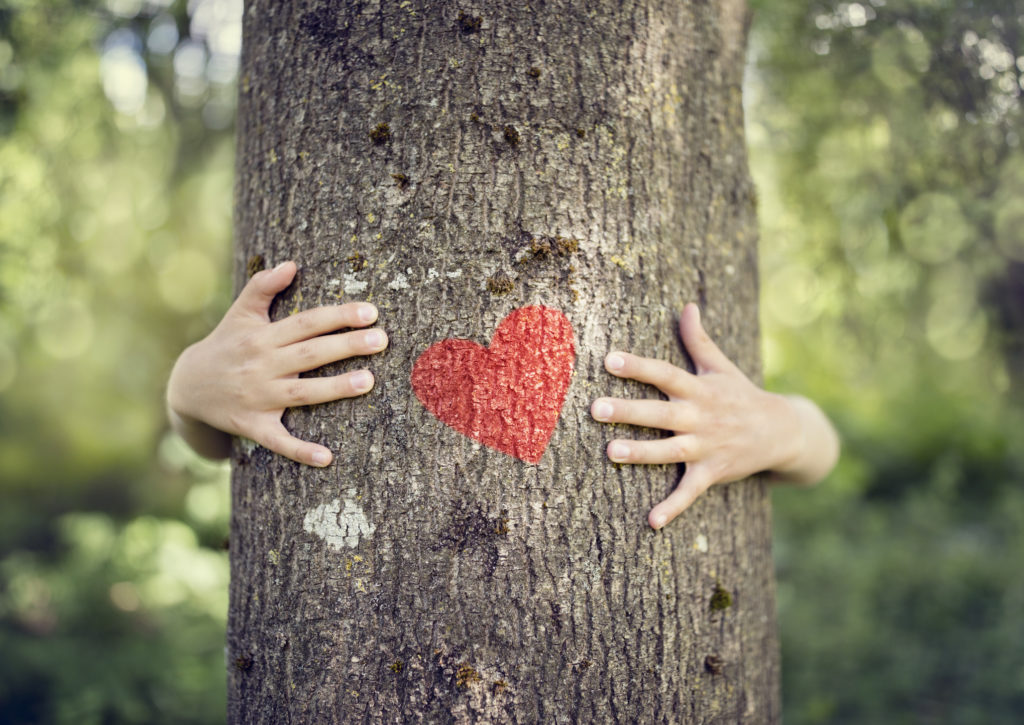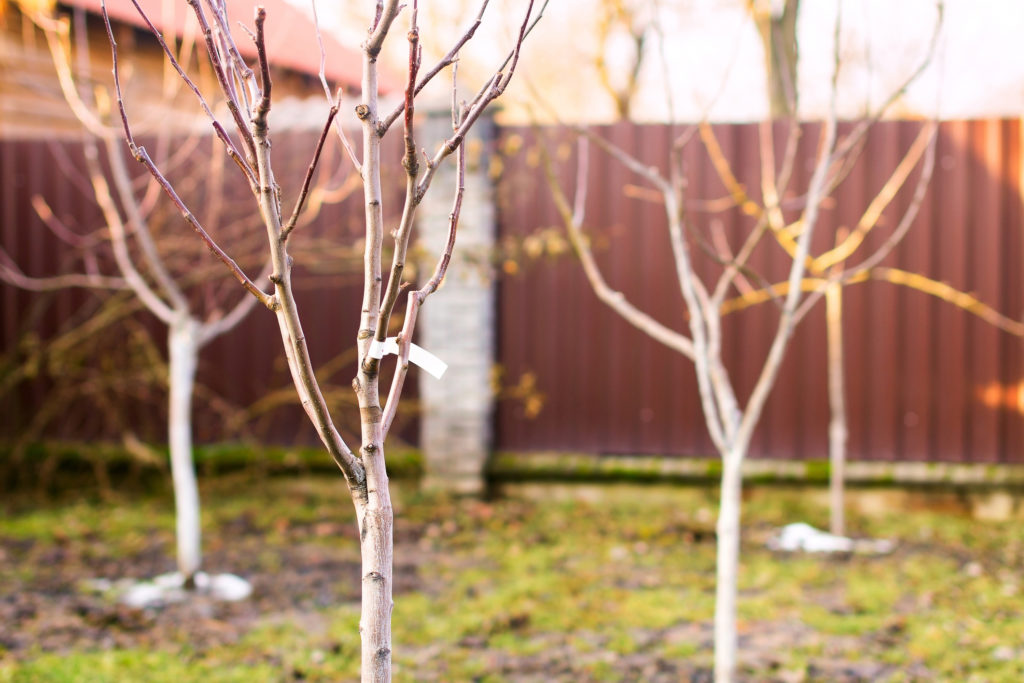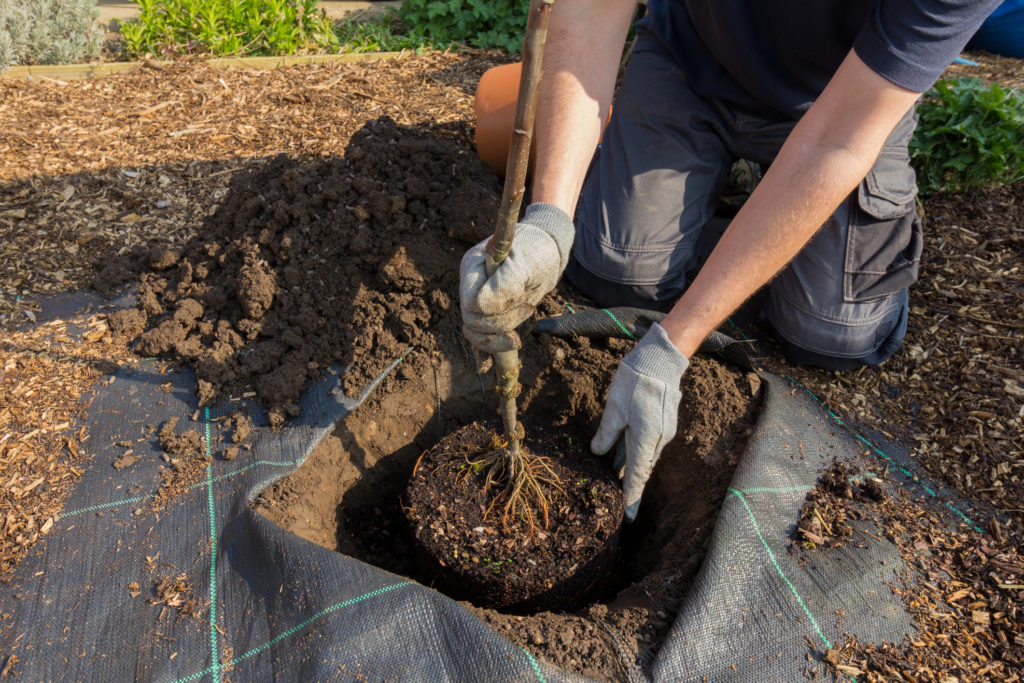
Trees are one of the most important and beneficial living organisms on our planet. They provide oxygen, food, and shelter for many species. There are many benefits to planting trees. April 24, 2020, celebrates Arbor Day. It is celebrated all over the world however Arbor Day was originally celebrated in 1872 in Nebraska. It is a day to celebrate by nurturing and planting trees, we all promote cleaner air, enhance wildlife by building better habitats, and generally improve our personal home environments. Trees create calming, peaceful energy around your home while also cleaning the air and creating benefits for your lawn and surrounding area.
How to Plant Bareroot Trees

When planting a bareroot tree, you should soak the roots for 2 to 24 hours prior to planting. We recommend using Root & Grow Plant Starter in the water to stimulate the root growth. After soaking the tree, you will need to dig a hole. It will need to be wide enough to allow the roots to spread out in all directions. The soil removed to make the hole should be enriched with peat moss or compost to enrich the soil around the newly planted tree. When the hole is half full place 3 to 4 Gro-Max Tablets right next to the root system. They are slow release and will not burn the roots. Next, fill the half-filled hole with a pail full of water to help remove any air pockets from around the root. Finally, fill the rest of the hole with the remaining soil.
How to Plant Potted Trees

If you are planting a tree that has been grown in a pot, before removing it from its pot move it to the area to be planted. Examine the root system to make sure it is not root-bound. If it is, you must improve its condition by loosening or physically cutting those bound roots. You can do this by taking clean pruners or pocket knife and cut into the ball on four sides and especially at the bottom of the root ball if circular growing roots are visible. It should go at least a couple of inches deep to cut the roots that are on the edge of the pot. You can also pull roots on the outside of the pots so they are loose from the soil mass. This encourages the roots to grow out of that root ball. If this is not done, the root system may keep circling the soil mass and in a few years, may girdle the root system and cause the decline of the tree.
When the root ball is out of its root bound condition, dig a hole about one and a half times as large as the container it was grown in. Then place the tree in the hole, sprinkle MYKE Mycorrhizal Tree Inoculant around the edge of the root ball, and then backfill with a 50/50 mixture of the natural soil combined with compost or leaf mulch-like organic material to cover the root ball. You can also use Gro-Max Fertilizer tablets, at least 5 to 6 for potted trees. These tablets will provide fertility for a few years. Then use the handle end of your shovel to carefully tamp down the compost and soil mixture around the root ball and hose water to remove air pockets around the root system. The tree should be planted deep enough to completely cover the root ball by 1 to 2 inches, no deeper. Water a couple of times a week for at least three weeks by letting the hose run to completely saturate the soil and then let it dry out between waterings. Water more frequently the first summer if drought conditions exist.
Spacing for Trees
Determining the correct spacing for your trees is one of the most important steps. When not properly planned, trees could grow to impact drain fields, the foundation, and the roof of your home. You must take into consideration the tree’s mature height, crown, and roots.
The roots will spread 1.5 to 3 times as wide as it will be tall. However, there are some trees that will grow even wider such as Willow, Poplar, and Cottonwood. These trees should be planted over 100 feet from any building, drain fields, septic tanks, or swimming pools.
The height and crown of the tree are important to consider. When planted too close to your home, the branches could easily break windows or damage the roof during storms.
Tree Spacing Guide
| Tree Size | Example of Trees | Spacing |
| Small trees (< 30 ft.) | Almond, Crabapple, Hawthorn, Filbert, Redbud, Serviceberry | 8 – 10 ft. |
| Medium trees (30 to 70 ft.) | Birch, Chestnut, Evergreen, Maple | 15 ft. |
| Large trees (> 70 ft.) | Cypress, Hickory, Pecan | 20 ft. |
| Large aggressive trees | Cottonwood, Poplar, Willow | 100 ft. |
Caring for Newly Planted Trees

Watering
Watering is the single most important factor during the establishment period for trees. Trees can be damaged or killed by too much or too little water. Monitor the water and moisture level around the root ball of your new trees frequently. Remember that newly planted trees from containers are still absorbing water from the roots in the root ball. The soil around the root ball can be moist while the original root ball will remain dry, so water the surrounding area and close to the trunk near the original root ball. New trees should receive up to 1-inch of water per week. Water long and deep to encourage new roots to grow down rather than remain mostly on the surface. New trees and woody shrubs should be watered for the first few years after planting until their root systems become established.

Mulching
Add a layer of mulch around the surface of the root ball after initial watering. Shredded cedar, wood chips, or decomposed leaves are all excellent options for mulch. These products will insulate the soil against extremes in temperatures, they help retain moisture and help to suppress unwanted weed growth. Keep the mulch product at least two inches back from the trunk to allow the tree trunk to “breath”.
Staking
Newly planted trees may need to be staked to help keep them from being blown over by the wind. For small trees, place a single stake in the ground on the windward side of the tree. Then a single wire or rope can be placed from the stake to the tree. Place the wire or rope through an old piece of the hose so the movement of the wire or rope does not wear the bark away.
If the tree is larger, you should use guide wires on three sides of the tree placed about 15 to 20 feet from the trunk of the tree. Drive the stakes into the ground and place the wire on the stake. Then place the wire through an old piece of garden hose and run it around the tree where a branch comes out. The hose protects the bark from being worn off. These supports need only be in place for a year. By then the tree roots should be established.
Tree Wrapping
Because the bark is so thin on young trees, you should “wrap it” for the winter to prevent cracks that can come from bark injury in the winter. It also prevents rodents from eating the bark when other food is not available. It may be necessary to make a “cage” of hardware cloth around your new trees, especially fruit trees, from 2-inches below the soil surface up to 2 or 3 ft. of the trunk or to the first set of lower limbs, whichever comes first.

Trees contribute to a beautiful landscape and a good shade tree in your will add value to your home. They can cool your home and surrounding areas as well, saving you on your energy cost in the summer and can also be a wind barrier in colder seasons. Trees slow the evaporation of water on your lawn. If you have a south-facing home, it will provide shade, beauty, and can be used as a privacy screen for your property. Adding trees will contribute to the beauty of your home, your neighborhood, and to the planet.
Happy Arbor Day from Jung Seed!
Other Recommended Reading

- Top Tips For Fruit Trees: Planting, Caring, & Maintenance
- Bareroot vs Potted Plants: What Is The Difference?
- Demystifying Fungicides
- Protect Your Garden From Unwanted Animals
At Jung Seed Co, we strive to be your go-to guide for all your gardening needs. Our YouTube channel Jung Garden Center now includes our new video series All Things Green where our experts provide gardening tips for all levels of gardeners. When you need reliable gardening advice, turn to the trusted experts at Jung.
View our new catalog online or browse our website for all of your gardening favorites. To receive info on new products, exclusive deals, and specials, be sure to sign up for our weekly email. Join our Facebook page, to discuss all things gardening!